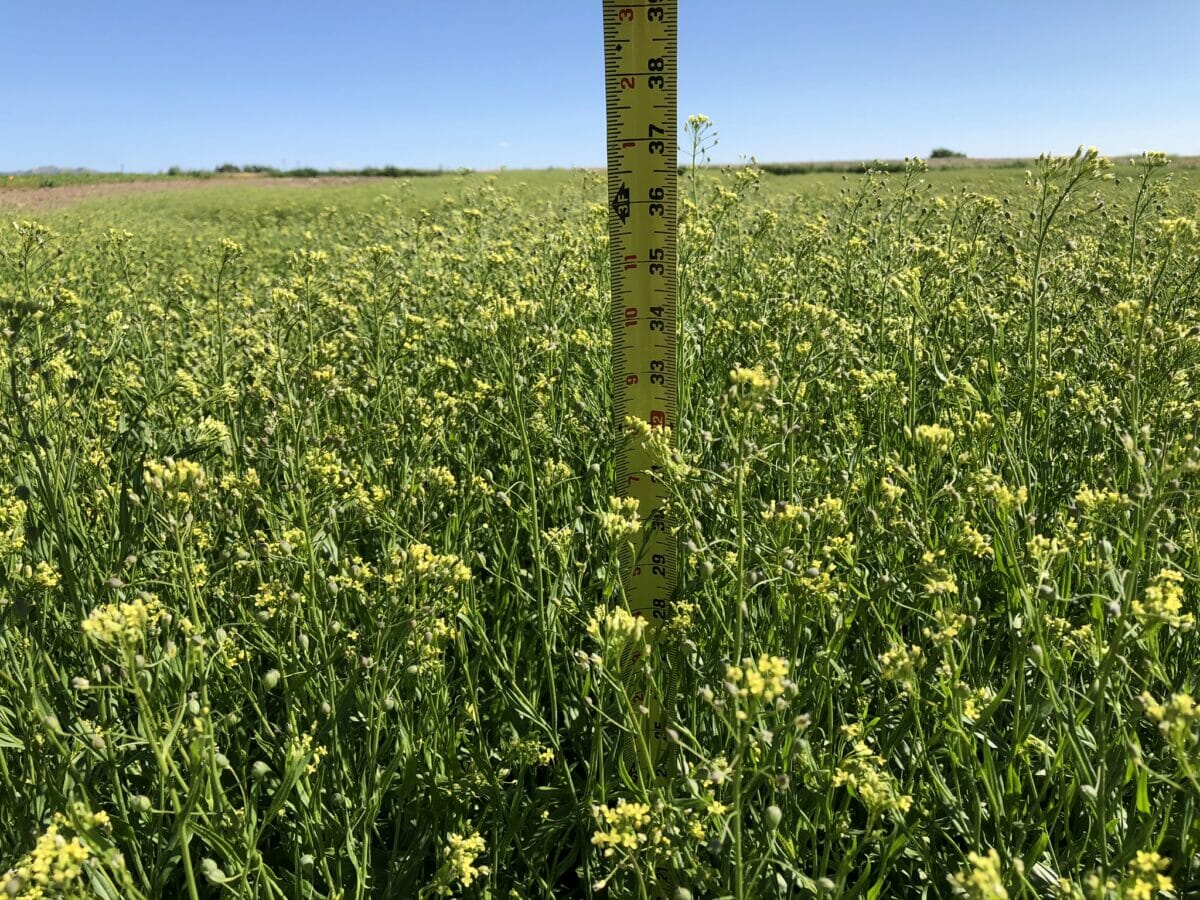Camelina, an underutilized grain crop, could prove key to the future of renewable bioplastics.

Camelina sativa, commonly known as camelina or false flax, is a long reedy plant that sprouts about a dozen buds at its tip, which blossom into pale yellow flowers in early summer. Aesthetically, it’s similar to canola or rapeseed. It’s also a hardy plant, suitable for colder climates and perfect for growers in the Canadian prairies or northern US—another trait it shares with canola.
But camelina has one unique feature that sets it apart, which some researchers are banking on: It has the potential to revolutionize the bioplastics industry.
[RELATED: This Plant May Have Evolved to Escape Humans]
At least, that’s what the folks at Yield10 Bioscience are working toward. The agricultural bioscience company has been researching and developing new camelina varieties and looking at the plant’s application potential across sectors. It sees uses for camelina as a cover crop, a plastic producer and even as fish food.
“It’s a game changer,” says Oliver Peoples, CEO of Yield10, who explains that, because of the earlier successes of rapeseed, canola oil took off and got a greater portion of available funding and development in the past several decades.

Oliver Peoples. Photo courtesy of Yield10.
But now, our population levels are pushing canola past what it can do. “You’ve got population growth, you’ve got the demand for more oil, more protein, you’ve got the whole renewable fuels area…and we’re already producing all the canola we can produce,” Peoples says. That’s what initially prompted researchers to turn to camelina, which requires fewer supports in terms of fertilizers and water consumption. As it turns out, camelina might also be key to the future of plastic.
A major source of bioplastic is polylactic acid, or PLA. It’s made by fermenting the starch and sugars from crops such as corn, beets and/or sugar cane. From there, lactide molecules in the mixture bond together to form polymers, which can be reconfigured as PLA and used in any number of products.
[RELATED: Botanists Identify New Carnivorous Plant]
With camelina, however, Peoples says you can take out that middle step, as the plant does the work for you, creating a polyester called PHA, also known as polyhydroxyalkanoates. The PHA material is both marine and soil biodegradable. “Camelina makes a polymer chain inside the seed. We have to extract that along with the oil and the protein, but what it does is save all the inefficiencies and all the energy costs and all the water required for that downstream work,” says Peoples. “Instead of [plastic] made from plants, it’ll be made by plants.”
Yield10 is also looking at how camelina fares as a cover crop and a winter crop, experimenting with varieties that could extend the plant’s growing season. It is even using camelina oil in feed for livestock and fish, which could change up how commercial aquacultures run. Right now, much of the commercial feed comes from harvested sardines. “We’re making something that’s more or less a replacement for fish oil,” says Peoples. “It’s sustainable and mercury-free because it’s not harvested from the ocean.”
Since the PHA-derived plastics are biodegradable, Peoples says the plastic could be a key product as we continue to shift to more zero-waste and carbon-neutral materials. Although companies such as Yield10 are looking at camelina as the future, it’s unlikely that we’ll see a huge shift in the production of bioplastics tomorrow. Three to five years down the line, however, could prove to be a key time for the crop.
I seem to remember another crop being tried experimentally , first during WW Ii then in the mid 80’s as a rubber latex substitute. Think it began with a G. Long polymer chain feedstock. Then the jojoba scam, handout programs, and collapse in oil prices chased everyone away.